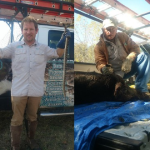Starlings can be found in a variety of environments, from farm fields to urban areas. They generally travel in flocks and can be seen feeding on local vegetation. In highly populated areas, starlings be seen roosting in trees. Starlings are one of the few species of birds that can thrive in areas of dense human population.
Starlings are not just your average neighborhood birds. These intelligent and highly adaptive avians have made their presence known far and wide, and while they are striking to observe, they can also pose certain challenges, especially when they decide to call our structures home.
Appearance
General Characteristics
Starlings are medium-sized birds that possess a stout build. With a short tail, triangular wings, and a strong, straight bill, they are often seen walking or running on the ground, foraging for food, and are known for their ability to mimic various sounds.
Coloration/Patterns/Distinctive Markings
In their adult phase, starlings have a glossy black appearance with purplish or greenish iridescence. Their winter plumage is speckled with white dots, giving them a somewhat "spangled" appearance. Juveniles are dull brown, gradually gaining the glossy adult coloration as they mature.
Size/Features
A typical starling measures about 8-9 inches in length with a wingspan ranging from 12-17 inches. They weigh between 2-3.6 ounces, making them relatively light but quick on the wing.
Biology
Digestion and Diet
Starlings are omnivorous. Their diet mainly consists of insects, fruits, and seeds. Their strong bills allow them to probe the ground efficiently for invertebrates, making them proficient foragers, especially during breeding season when they're feeding their young.
Reproduction
Starlings usually breed once or twice a year. They lay 4-6 pale blue or greenish eggs in a nest made of twigs and grass. The incubation period lasts about 12 days, and the chicks leave the nest in another 21 days.
Unique Sensory Systems
Starlings have an exceptional ability to mimic sounds, from other birds' calls to even man-made noises. This skill is not only intriguing but serves various social and protective purposes for these birds in the wild.
Habitat
Preferred Environments
While starlings are versatile in terms of habitat, they prefer open grasslands, fields, and parks where they can forage freely. They're also frequently spotted in urban and suburban areas, taking advantage of human-made resources.
Urban Encounters
In urban settings, starlings often roost on building ledges, street lights, and trees. Their adaptability and fearless nature allow them to thrive in close proximity to humans, often to the dismay of property owners.
Temperature Regulation
Starlings migrate to warmer regions during colder months. They can often be seen sunning themselves, with their feathers fluffed, which helps regulate their body temperature and maintain feather health.
Behavior
Defensive Mechanisms
When threatened, starlings form large murmurations, which are swirling masses of birds in flight. This tactic confuses predators, making it difficult for them to single out and target an individual bird.
Foraging Techniques
Starlings utilize a "open-bill" probing technique to locate food. They insert their bill into the soil, then open it to create a hole, making it easier to capture prey.
Migratory Patterns
Starlings migrate seasonally based on food availability and weather conditions. In North America, northern populations may move southward during winter while others remain stationary if the conditions are favorable.
Damage/Problems
Diseases
Starlings can be carriers of various diseases like histoplasmosis, which can pose health risks to humans when in close proximity.
Structural Damage
Starlings often nest in building crevices, causing blockages in ventilation systems and gutters. Their droppings can also corrode buildings and machinery.
Noise and Droppings
Large congregations of starlings can be noisy, especially during their early morning calls. Their droppings can accumulate quickly, becoming a nuisance and health hazard.
Trapping & Removal
Safe Handling
Starlings, like all wild animals, should be handled with care to ensure the safety of both the bird and the handler. Proper training and equipment are essential for safe removal.
Relocation or Hazing
Relocating starlings can be a humane way to deal with an infestation. In certain cases, hazing or the use of deterrents can be effective in discouraging these birds from roosting or nesting in undesired locations.
Deterrence or Prevention
Property Maintenance
Regular inspection and maintenance of properties can prevent starlings from nesting. Cleaning up food sources and water can also deter them.
Physical Barriers
Netting, spikes, and other deterrents can be installed to prevent starlings from roosting or nesting on structures.
Exclusion
Sealing off potential nesting sites and entry points, like vents or crevices, can be an effective way to keep starlings at bay.
AAAC Wildlife Removal services are your go-to experts for dealing with nuisance wildlife. With our extensive experience and knowledge, we ensure safe, humane, and effective removal of starlings and other unwanted guests. Protect your home and business today with AAAC Wildlife Removal services.


















































